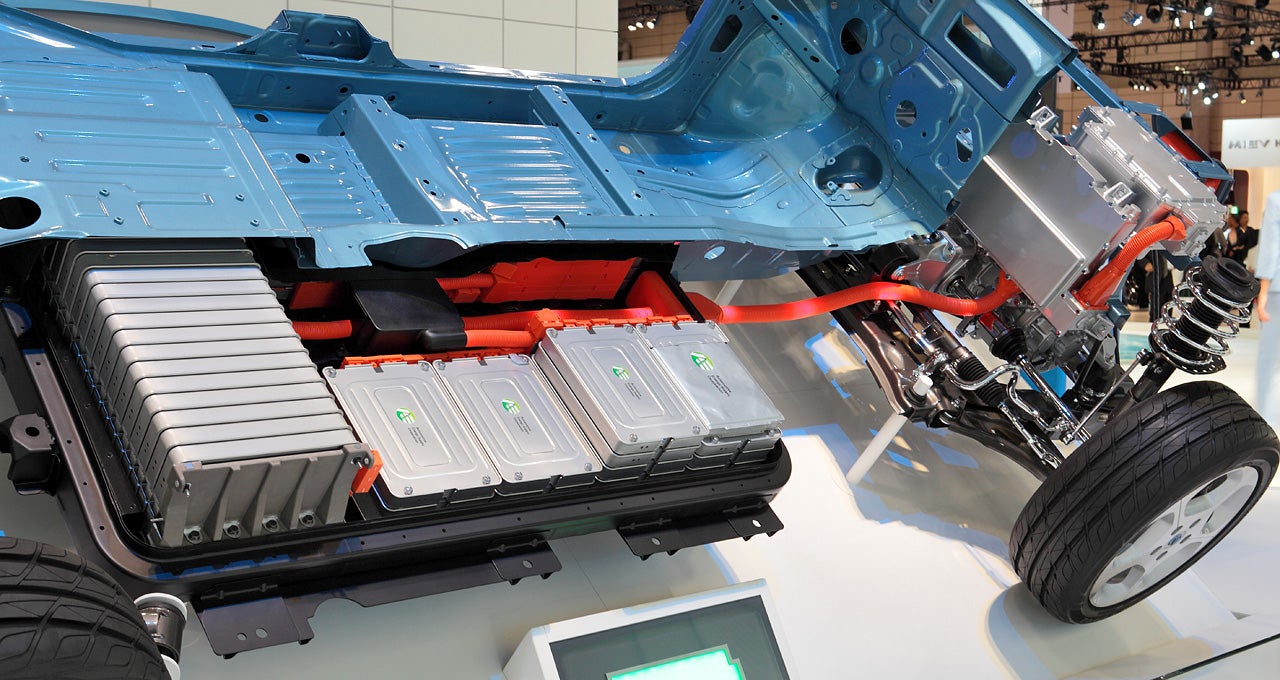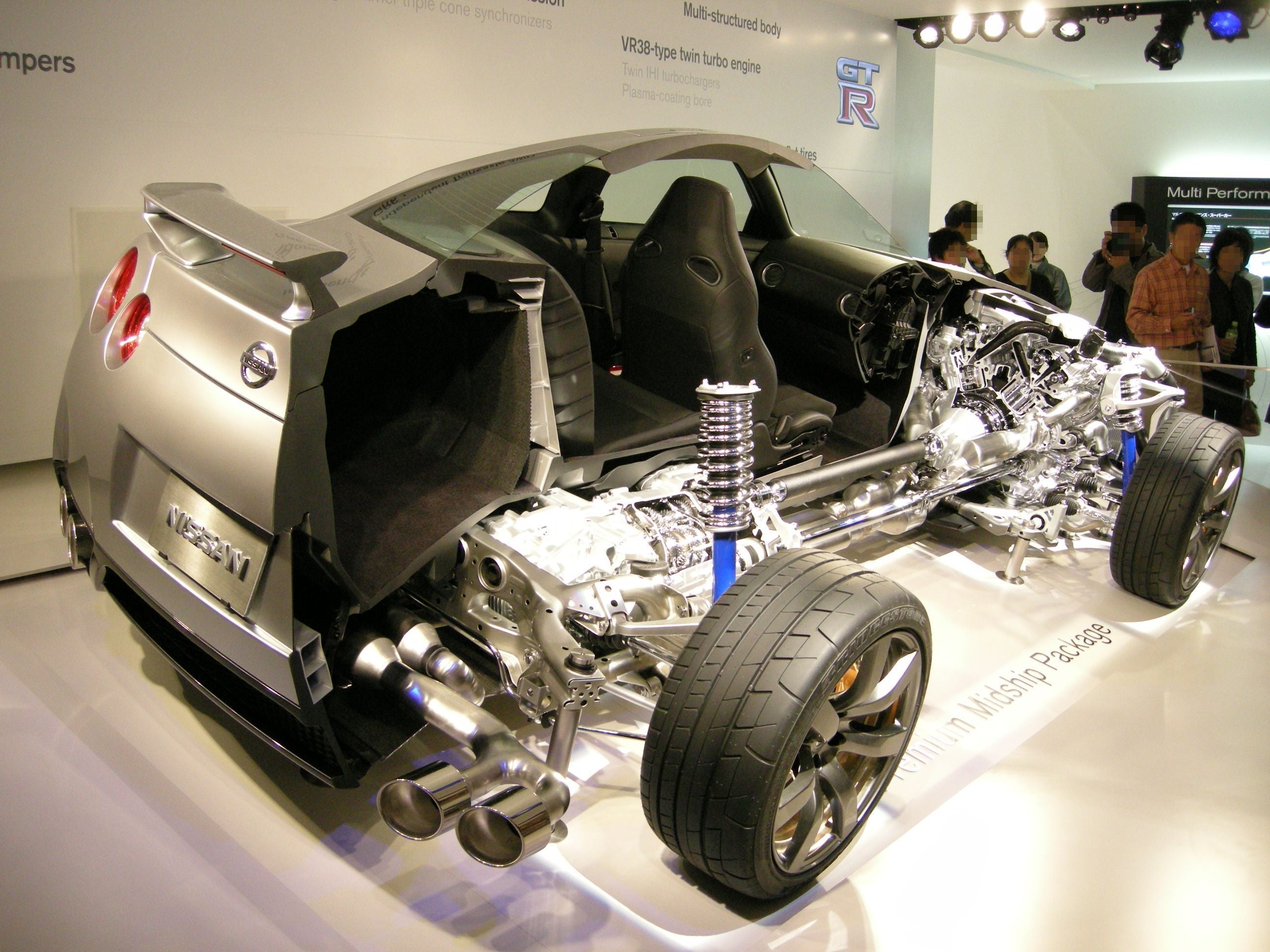 "KylesPerGallon" (gentlemandriver)
"KylesPerGallon" (gentlemandriver)
07/18/2014 at 16:06 • Filed to: electric, cars, drivetrain, cog
 1
1
 2
2
 "KylesPerGallon" (gentlemandriver)
"KylesPerGallon" (gentlemandriver)
07/18/2014 at 16:06 • Filed to: electric, cars, drivetrain, cog |  1 1
|  2 2 |

The question arises, what will become of future vehicles. Any self-respecting engineer will take the heavy battery packs needed to power today's electric vehicles and put them as low and central to the midline of the chassis. Doing anything else would be pure folly. Because of their mass being concentrated as low as is physically possible, it helps centralize and drop the center of gravity. This has fantastic benefits to both cornering and acceleration. It leaves electric vehicles leaps and bounds more dynamic than having an internal combustion engine nestled between the axles. This is because gas burners tend to be very tall because of their necessary design language. Moving upwards you start with the oil pan up to the crankshaft up to the cylinders and above that is are the valves, intakes, and camshafts. Even boxer engines seem like NBA stars next to the short statured battery packs.
Frankly by this point we've gotten well adjusted to drivetrain layouts. Muscle cars are a big V8 up front and power sent to the rear. Hot hatch has a four cylinder sending power to the front wheels. Your average Ferrari or McLaren engineer has long ago come to the conclusion that the internal combustion engine is best placed amidships. This MR drivetrain layout keeps the heaviest part of the car located close to the center of gravity. Keeping the engine close to the center of gravity helps in cornering by reducing the amount of force needed to rotate all that mass. It also helps distribute the maximum amount of grip available under acceleration and deceleration.

We grow familiar with certain brands drivetrains and characteristics. Porsche has a flat six sticking out behind the rear axle. We know that old 911s suffer from lift off oversteer from the pendulum effect. Though wizardry engineering they allow modern 911s to defy the laws of physics and keep their RR cars pointing in the right direction. BMW, a real BMW will sent the power to the rears, while Subaru and Audi firmly established themselves in the AWD camp.
There will never be an electric Porsche car with a ton of lithium-ion cells shoved in the back.
Looking at what's on the market now with the Tesla Model S and the BMW i8 and picturing those to come in the future, are we about to enter into an age of monotonous handling vehicles? Sure they will all have a ton of torque down low and accelerate like a coiled up snake, but will they really feel different from each other?
It would be nonsensical to shove a bunch of battery packs under the hood and have the only motors powering the rear wheels. Batteries are easily positional ballast. There will never be an electric Porsche car with a ton of lithium-ion cells shoved in the back. If the size of the engine allowed for it we would sit above it, but even with the smallest fuel burner we would tower over it like a pre-industrial stagecoach. I doubt even the most bolstered Recaros would make you feel planted 3 feet off the ground. Which begs the question; will future cars have a distinct personality and character?
Now the differences can be fairly straightforward from an engineering standpoint. One can change which wheels have electric motors attached to them. How much of the available power is sent to those wheels when the gas accelerator is stamped. This becomes more of a technical and computer-programming question. It becomes modifying values of 1s and 0s and lines of code to say, "This wheel gets X amount and that wheel gets Y based on temperature/cornering forces/surface grip." These variables, now quickly changeable with a laptop, will be influenced by lawyers and insurance companies who would prefer understeer to oversteer. As a student of engineering and an automotive enthusiast I do welcome our battery powered future, I just wonder what we will sacrifice in the process.
Thanks for reading if you made it this far. I'm trying to jump headfirst into this automotive journalism thing for the time being. In the future I will be writing under the name !!!error: Indecipherable SUB-paragraph formatting!!! and I encourage you all to check out my website and follow me on FB at !!!error: Indecipherable SUB-paragraph formatting!!! and !!!error: Indecipherable SUB-paragraph formatting!!! on twitter and instagram. Things are a little bare at the moment but I plan on having a lot of interesting content like this in the future.
 tromoly
> KylesPerGallon
tromoly
> KylesPerGallon
07/18/2014 at 18:59 |
|
My apologies for any offense that could be taken from my comment, reading through the post body (which is well written, very nice work) I didn't quite see how it relates to the title.
Nevertheless, you have a very good argument about battery positioning. The big reason engines are placed where they are (and you touched on it, in a way) is packaging the entire vehicle for what its intended purpose is. A Muscle Car is able to get its power to the ground more effectively being RWD than FWD, giving it a Front Engine Rear Drive layout. Similarly, FWD cars tend to have lots of cargo room in the back, again as part of their packaging, and "super" cars have mid-mounted engines for "optimal" (being completely subjective) handling, 'with the rest of the vehicle essentially packaged around the engine position.
So it would be foolish for batteries to be mounted very far forward or backwards because there does not need to be a physical link between batteries and motors. Ideally, in-hub motors would start being used, completely removing any drive forcesmechanical drive parts from the chassis, combined with batteries mounted as low/conveniently as possible and the electric vehicle would really be going somewhere.
 KylesPerGallon
> tromoly
KylesPerGallon
> tromoly
07/18/2014 at 21:09 |
|
Only uptight people get offended. These are always presented to inspire discussion like this. I just don't believe that a Tesla will be known for any specific handling characteristics. It essentially becomes its own drivetrain layout. BR (Battery Rear), where the cells are placed below the passenger compartment. If you're entering this segment to compete against Tesla for an all electric vehicle you aren't going to deviate from that packaging.